Whether you're looking for cool new designs, stunning new panels or speedy new tech, CES rarely disappoints for gaming monitors. CES 2022 was mostly remote for a lot of us, but that didn't mean companies didn't bring out the big guns for our virtual amusement.
Among the non-product-specific monitor news, Samsung announced it will be adding its HDR10 Plus technology for gaming. Like HDR10 Plus for TVs, it's Samsung's technology for using game designer-provided information to vary the way HDR is rendered on a scene-by-scene or shot-by-shot basis rather than using a single curve for an entire game. It's similar to Dolby Vision but free to license.

New QD-OLED monitor panel technology in the Alienware 34 tops my list of interesting news.
AlienwareAlienware 34 Gaming Monitor (AW3423DW)
Alienware's 34-inch curved monitor is probably my favorite of the show. It uses Samsung's new QD-OLED panel, which combines the great color rendering of Samsung's Quantum Dot technology with the contrast, color precision and speed of OLED for a display that promises to look beautiful and perform well. And unlike a lot of whizzy monitors that get announced at CES, which tend to ship later in the year, Alienware's is expected by March 29 (it will ship first in China on March 2 and expand to other regions in April). But we don't yet have a price. The biggest downside is it lacks an HDMI 2.1 connection, which makes it suboptimal to connect to a console (you can use it, but you won't get variable refresh rate support).
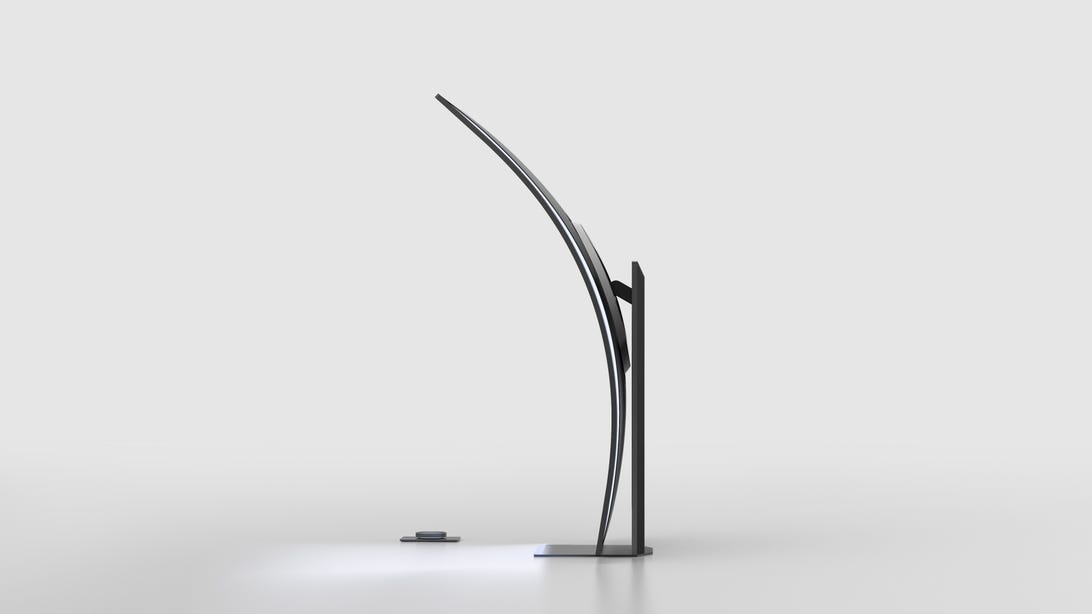
Samsung Odyssey Ark, the ballet dancer of gaming.
SamsungSamsung Odyssey Ark
We got minimal information about Samsung's minimalist gaming monitor, but its most salient feature -- aside from its stunning design -- is that it's a 55-incher you can rotate into portrait mode for a "cockpit-style" view. I'm not sold on the logistics of using a monitor that big on a desktop (and I've tried), much less using it rotating it. But if the design makes its way down to 49 inches, I'm there, provided it uses a similarly awesome panel technology, like MicroLED, which we've yet to see in a desktop monitor or QD-OLED. And that it doesn't cost $5,000 or ship several years from now.
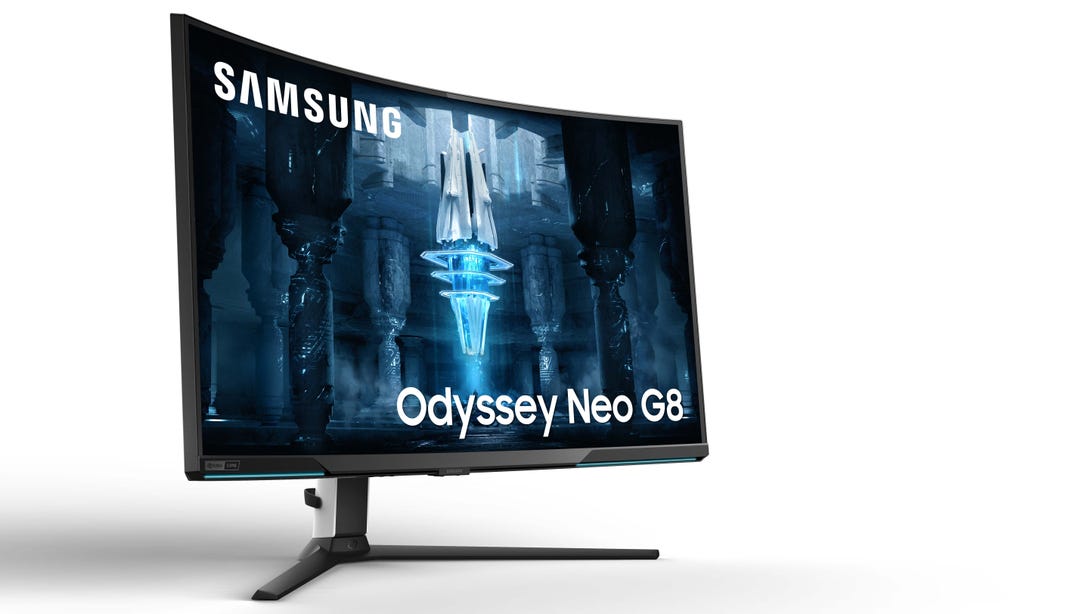
The Odyssey Neo G8, so bright
SamsungSamsung Odyssey G8 Neo QLED (G85NB)
It's nowhere near as pretty as the Odyssey Ark and isn't the first of its kind, but a 32-inch version of the pricey 49-inch Odyssey G9 Neo QLED launched in July last year is still floats-my-boat-worthy. Like it did with the G9 Neo QLED, Samsung offered just a teaser for the G8, with no price or ship date. But it has a similar high-contrast curved screen with a peak brightness of 2,000 nits in HDR, a 240Hz refresh rate and a 1-millisecond gray-to-gray response time, as well as the same design as the Odyssey G7 and G9 (in white) and support for FreeSync Premium Pro and G-Sync.

ViewSonic's Elite XG321UG has great specs and an unusual but nice stand design.
ViewSonicViewSonic Elite XG321UG
This display stands out for me for a couple of reasons. It has notable specs: a 32-inch HDR 4K DisplayHDR 1400 monitor with a 1,152-zone Mini LED backlight, 144Hz refresh rate and Nvidia Reflex latency analysis support, which hits almost all the right checkboxes (no HDMI 2.1, for one). At $2,500 it's expensive, but about par for a high-end gaming monitor. Plus it gets bonus points for shipping within the next couple of months. The other reason is the stand design, which not only looks better than most competitors (at least in my aesthetic), but it's got a flat base. I need every inch of desk space and hate stands that either take up too much, can't comfortably accommodate stashing a keyboard on the base or that you can't pile things on.
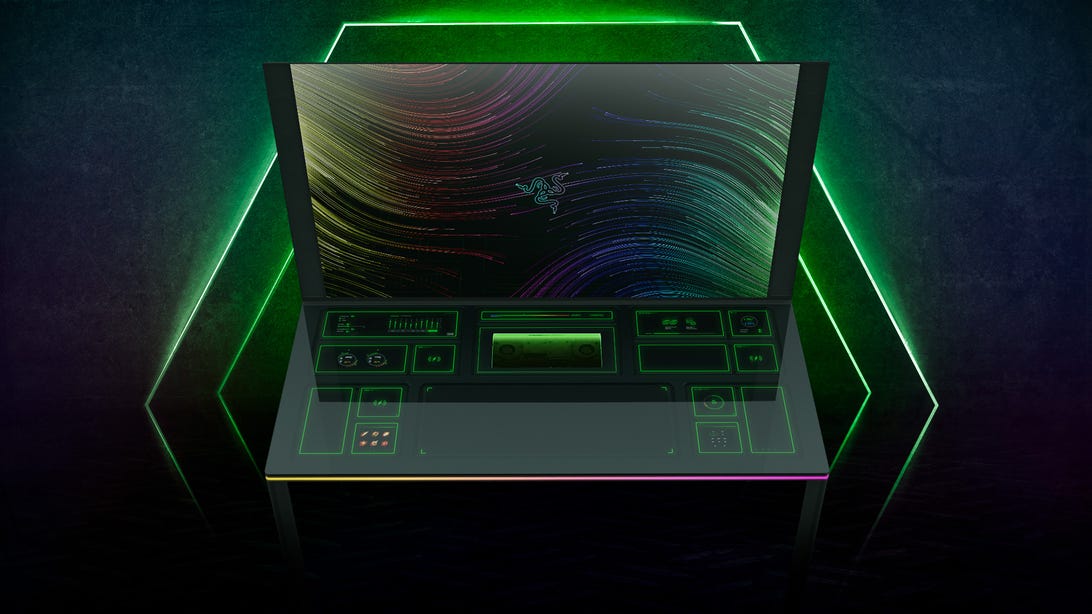
Razer Project Sophia has a desk you really don't want to spill coffee on.
RazerRazer Project Sophia
One of Razer's concept reveals, Project Sophia is sort of an all-in-one gaming PC/desk/living area. I just see it as a 65-inch monitor that you're going to regret having bought after two years, or possibly the gaming equivalent of a jumpsuit.
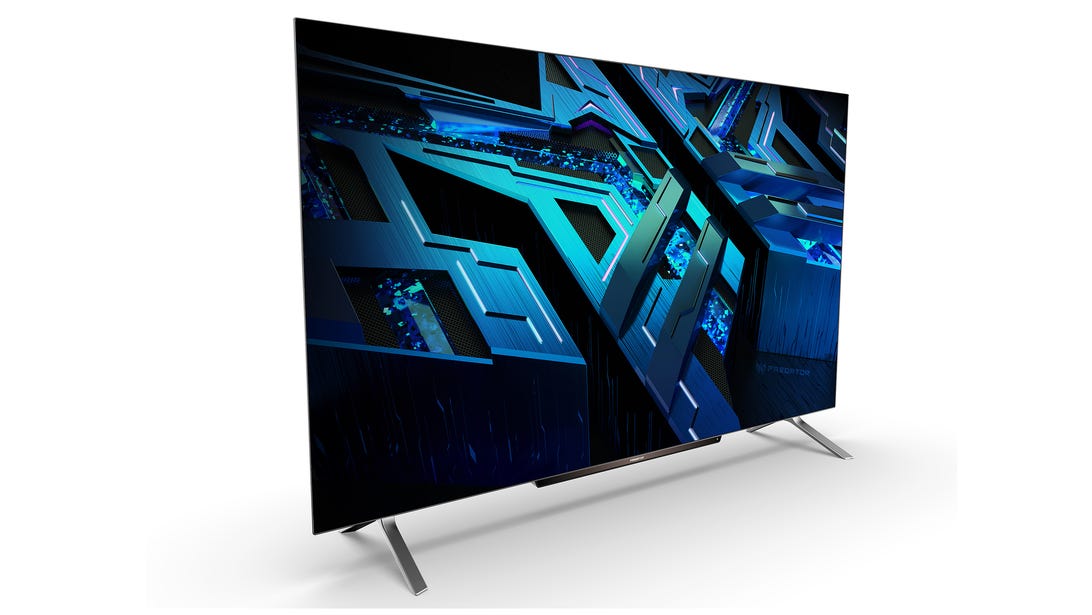
The Acer Predator CG48 "desktop" gaming monitor
AcerAsus ROG Swift OLED PG42UQ and PG48UQ
Acer Predator CG48
Monitors supporting HDMI 2.1 for use with game consoles as well as PCs, and which do so with the necessary features enabled, aren't yet thick on the ground. But we're starting to see a lot more of them, even if their feature status is unknown. The problem is finding the right size, and I don't think 55 inches is it. Most of the models under 55 inches have IPS-based screens rather than OLED -- OLED is great for gaming and has much higher contrast than IPS. The 48-inch models like the Predator CG48 or Asus ROG Swift OLED PG48UQ announced at the show aren't unique, but uncommon enough that they're worth a mention, but the 42-inch ROG Swift OLED PG42UQ is rare if not unique, and begins to bring these hybrid PC/console displays into territory where they're good for people who are actually trying to save space by buying a dual-purpose monitor instead of a TV.
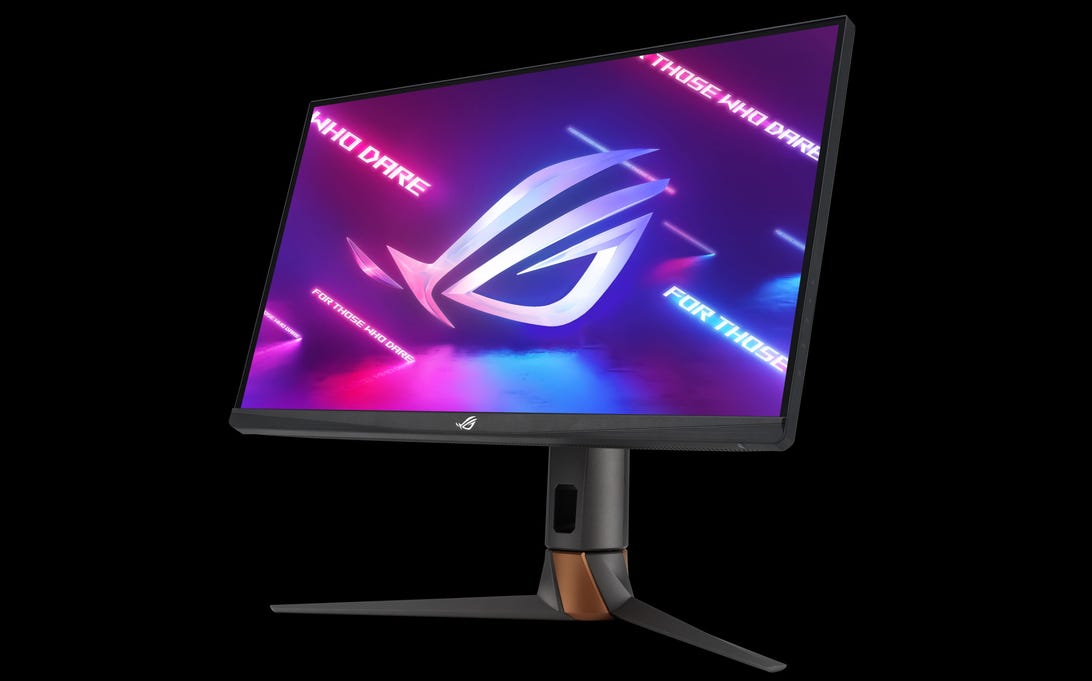
The fastest of the 1440p G-Sync Esports monitors, the Asus ROG Swift 360Hz PG27AQN.
AsusNvidia G-Sync Esports monitors
At the show, Nvidia launched its next-generation 1440p G-sync Esports standard with Reflex Latency Analyzer and a 25-inch mode. It announced four debut models, including ViewSonic's Elite XG271QG, AOC Agon Pro AG274QGM, MSI MEG 271Q, all with a 300Hz refresh rate, and the Asus ROG Swift 360Hz PG27AQN. Normalizing high-quality 1440p 27-inch displays for esports is a great step up from 1080p and 25 inches. They all incorporate Mini LED backlights, but the AOC and MSI stand out because they're both DisplayHDR certified with 576 zones for local dimming.
Gaming monitors from CES 2022 to get hyped for - CNET
Read More


No comments:
Post a Comment